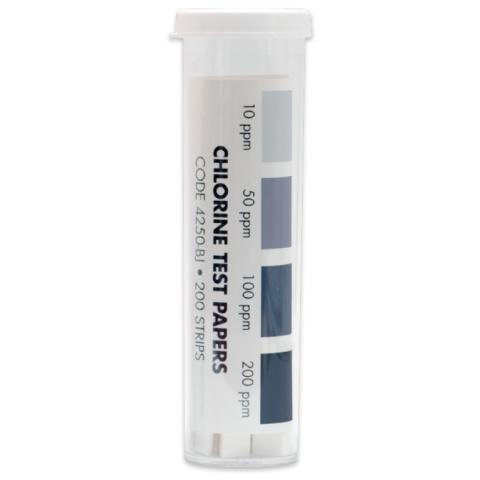A useful instrument for evaluating a material’s endurance under simulated bright sunlight is the Xenon Arc Test Chamber. It is frequently used to make sure that items can endure exposure to light and weather in a variety of sectors, including textiles and the automobile industry. Your test findings can be considerably more accurate and reliable if you can fully utilise them. These 10 tips will help you get the most out of your test chamber for xenon arc lighting.
1. Recognise the Fundamentals
Make sure you fully comprehend how the Xenon Arc Test Chamber works before tackling challenging testing circumstances. This entails being familiar with the fundamental setup techniques, comprehending the controls on the chamber, and being aware of how the xenon light source mimics natural sunshine. A solid foundation will assist you in avoiding typical mistakes and dangers.
2. Consistently calibrate
Calibration regularly is essential to keeping your test chamber accurate. The purpose of calibration is to guarantee that the temperature, humidity, and light intensity are all within predetermined parameters and remain constant. Your test findings might not be accurate if they are not calibrated properly. Refer to the manufacturer’s instructions on the frequency and methods of calibration.
3. Monitor Environmental Conditions
The ambient factors around the “xenon arc lamp accelerated aging test chamber“ might affect its performance. Make sure the chamber is situated in a steady environment with regulated humidity and temperature. Variations under these circumstances may have an impact on test outcomes, resulting in discrepancies.
4. Install High-Grade Filters
An essential component of your Xenon Test Chamber’s simulation of natural sunlight is its filter system. Accuracy and consistency in the light spectrum are guaranteed by high-quality filters. To ensure the integrity of your testing, regularly inspect them and change the filters as necessary.
5. Appropriate Sample Setting
The outcome of your tests might be greatly impacted by the way you prepare your samples. Make sure the samples are clean and devoid of contamination, and that they are cut to the proper size and form. To guarantee uniform exposure to the light source, samples must be mounted correctly inside the chamber.
6. Set Realistic Test Parameters
Achieving meaningful findings requires setting test conditions that are both relevant and practical. This entails selecting the proper amounts of light, heat, and humidity for the particular materials and testing circumstances. Restrictive parameters should be avoided since they may provide unreal and non-representative outcomes.
7. Employ Control Samples
You can spot any irregularities or discrepancies in the data by using control samples in your testing. Materials with well-known characteristics and behaviours, when exposed to light and weather, should be used as control samples. You can determine the performance of your materials with more accuracy if you compare test samples to control samples.
8. Examine Test Results Frequently
Finding trends and patterns in material performance requires routinely going over and evaluating test data. Make well-informed judgements on the creation and enhancement of products by using the data. Examine the data for any discrepancies or anomalies, and look into the reasons behind them to make sure your conclusions are reliable.
9. Carry out extended testing
While tests conducted over short periods might yield useful information, longer-term testing is necessary to determine the real durability of materials. Extended exposure to artificial sunshine can provide light on the behaviour of materials over time, revealing possible failure sites and long-term trends.
10. Keep Up with Innovations in Technology
New techniques and technologies are frequently introduced in the materials testing area, which is always changing. Continually learn about new developments in testing methods and “Xenon Test Chamber“ technology. To make sure you are using the most recent techniques, go to industry conferences, study pertinent publications, and interact with professional networks.
You may get more accurate, dependable, and significant test results by using these tips to maximise the performance of your Xenon Testing Chamber.
In summary
To sum up, the Xenon Arc Test Chamber is an effective instrument for evaluating a material’s performance and durability in a simulated environment. You can maximise its potential and guarantee the durability of your items by being aware of its features, advantages, and best practices. Appropriate testing helps satisfy regulatory requirements and consumer expectations in addition to enhancing the quality of the product.
FAQs
1. How often should I calibrate my Xenon Arc Test Chamber?
Calibration should be done regularly, at least once a year, or as recommended by the manufacturer to ensure accurate results.
2. Can I test multiple specimens at once?
Yes, most Xenon Arc Test Chambers are designed to accommodate multiple specimens, allowing for efficient testing of several samples simultaneously.
3. What materials can be tested?
A wide range of materials can be tested, including plastics, textiles, coatings, paints, and even food products.
4. What is the standard for xenon arc testing?
The xenon arc weather meter equipment manufactured by Effective Lab India is made keeping in mind that ASTM D2565 & ASTM G155 are xenon arc testing standards. To expose non-metallic materials, this standard specifies how to operate xenon arc light equipment.
5. Are there any environmental considerations?
Yes, it’s important to consider the environmental impact of the testing process, including proper disposal of used xenon arc lamps and adherence to environmental regulations.










